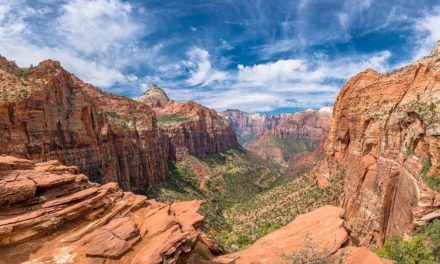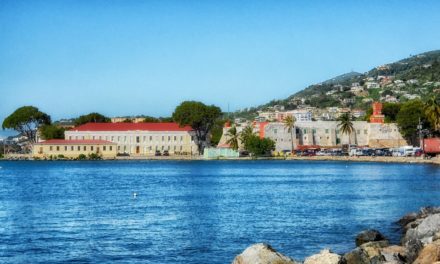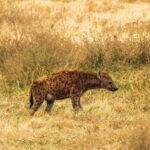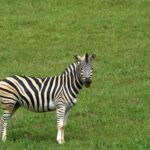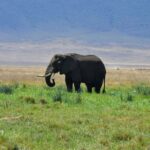Table of Contents
Overview / About
Set in the heart of Lake Superior, Isle Royale National Park is one of America’s most remote and least-visited parks a wilderness island known for its untamed beauty, rugged shorelines, and solitude. Located in northern Michigan, the park spans 894 square miles, including over 400 smaller islands and the surrounding waters.
Accessible only by boat or seaplane, Isle Royale feels worlds away from the mainland. Its isolation has preserved pristine forests, crystal-clear lakes, and a fascinating predator-prey ecosystem of wolves and moose one of the longest-running wildlife studies in the world.
Designated a UNESCO International Biosphere Reserve, Isle Royale offers a rare wilderness experience where nature rules and human footprints are few.
Wildlife & Nature
The park’s ecosystem is shaped by its island geography cool northern forests surrounded by freshwater seas.
Key Wildlife:
- Moose: The island’s most iconic animal, often seen near lakes or trails.
- Gray Wolves: Apex predators that maintain ecological balance.
- Red foxes, otters, snowshoe hares, and beavers are common.
Birdlife: Over 200 bird species, including loons, bald eagles, and mergansers, thrive here during summer.
Flora & Habitat:
- Mixed northern forests of birch, aspen, spruce, and fir.
- Wetlands and interior lakes form habitats for amphibians and aquatic plants.
- Rugged basalt cliffs and rocky shorelines tell the island’s volcanic past.
Unique Feature: The ongoing Wolf-Moose Project (since 1958) the world’s longest continuous predator-prey research study.
Experiences & Activities
Isle Royale rewards those who seek adventure, peace, and a true connection with nature.
Top Things to Do:
- Backpacking & Hiking:
- Greenstone Ridge Trail (40 miles) runs across the island’s spine, offering sweeping views.
- Feldtmann Loop and Island Mine Trail ideal for multi-day treks.
- Canoeing & Kayaking: Paddle along quiet inland lakes or explore protected bays of Lake Superior.
- Scuba Diving: Discover preserved shipwrecks beneath the cold, clear waters some dating back to the 1800s.
- Wildlife Watching: Spot moose grazing at dawn, or listen to the haunting call of loons echoing over still waters.
- Fishing: Lake trout and northern pike are abundant; permits are required.
- Ranger Programs: Evening talks and guided hikes during summer months.
No cars, shops, or modern distractions Isle Royale offers pure wilderness immersion.
Best Time to Visit
The park is open mid-April through October, but access depends on lake conditions.
- Late Spring (May–June): Cool and quiet; great for solitude.
- Summer (July–August): Warmest and most popular for hiking and paddling.
- Early Fall (September): Crisp air, fall colors, and fewer bugs.
- Winter: Park closed due to ice and extreme weather.
Peak visitation occurs July–August, though it still feels remote compared to other U.S. parks.
How to Reach & Park Entry
Location: Northwest Lake Superior, near Michigan’s Upper Peninsula.
Access: Only by ferry, private boat, or seaplane.
Ferry Services:
- From Houghton, Michigan: Ranger III (6 hours).
- From Copper Harbor, Michigan: Isle Royale Queen IV (3.5 hours).
- From Grand Portage, Minnesota: Voyageur II (5 hours).
Seaplane Access: From Houghton or Grand Marais (about 45 minutes).
Main Entry Points:
- Rock Harbor (East End): Main visitor center, lodge, and marina.
- Windigo (West End): Quieter, ideal for backcountry explorers.
- Entry Fee: $7 per person per day; camping permits required for overnight stays.
Where to Stay / Camping Options
Inside the Park:
- Rock Harbor Lodge: The only full-service lodging rustic rooms, cottages, and dining.
- Camping: 36 designated campgrounds with tent pads, shelters, and fire rings.
- Popular Sites: Daisy Farm, Three Mile, Windigo, and McCargoe Cove.
- Backcountry Camping: Allowed with permits; campers must carry in all supplies.
- Nearby Mainland Options: Hotels and cabins in Houghton, Copper Harbor, or Grand Portage are convenient before and after your trip.
Travel Tips / Safety Notes
- Plan ahead no cell service or stores on the island.
- Pack food, water filter, first aid kit, and essentials.
- Blackflies and mosquitoes peak in June–July bring strong insect repellent.
- Dress in layers; Lake Superior’s weather changes quickly.
- Respect wildlife maintain distance, especially from moose.
- Check ferry and weather updates before departure; services can be delayed.
Packing List
- Sturdy hiking boots
- Layered clothing (warm base and rain gear)
- Lightweight tent and sleeping bag
- Portable stove and food
- Water filter or purifier
- Insect repellent and sunscreen
- Maps and compass (no reliable GPS)
- Flashlight or headlamp with spare batteries
- Reusable water bottle and dry bags
Visitor Statistics
Isle Royale National Park receives roughly 30,000 visitors annually, making it one of the least visited but most revisited national parks in the U.S. Many return for its quiet trails, rugged isolation, and unmatched wilderness character.
Conservation & Responsible Tourism
Isle Royale is a living laboratory of wilderness ecology. Its isolation has preserved natural balance a rare example of predator-prey coexistence. The National Park Service works with scientists to monitor wolves, moose, and forest health.
Responsible Travel Tips:
- Follow Leave No Trace principles.
- Carry out all waste nothing is left behind.
- Avoid feeding or approaching wildlife.
- Use designated fire rings and conserve wood.
- Support preservation programs through donations or volunteering.
Isle Royale is a place where silence speaks, waves whisper against rocky shores, and wild nature thrives a true refuge for those seeking peace and purity.


